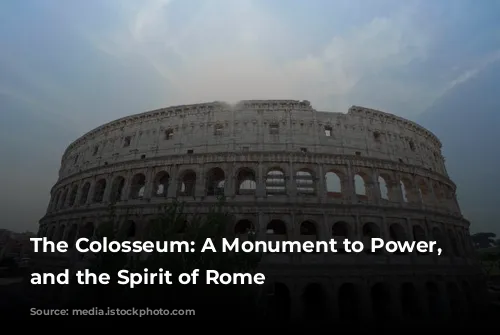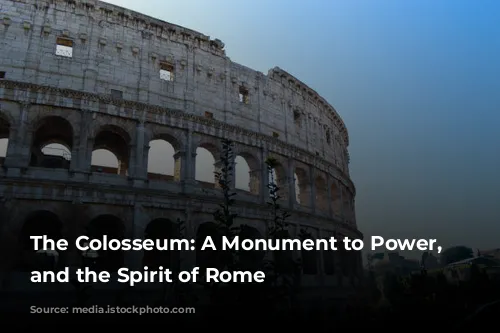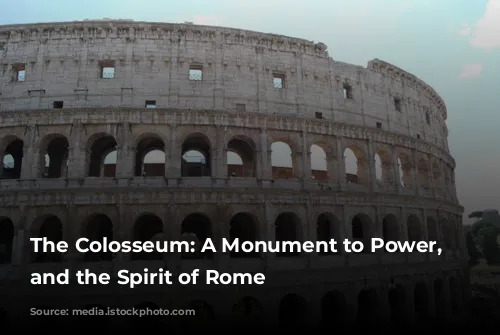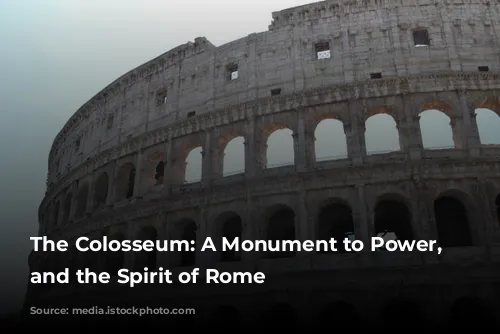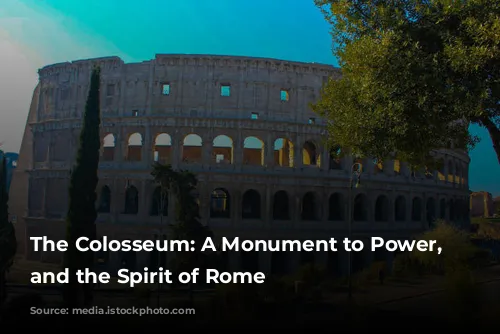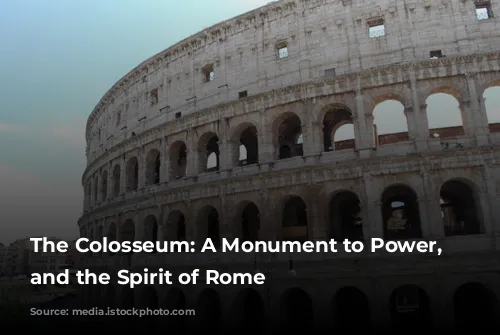Imagine standing before the Colosseum, its sheer size and grandeur dwarfing everything around it. This monumental amphitheater, built by the Roman Emperor Vespasian, stands as a testament to the power and ambition of the Roman Empire. Its imposing presence has captivated audiences for centuries, and it is no surprise that it is often referred to as the “Colosseum” or “Coliseum.”
A Colossal Opening
The Colosseum’s inauguration in 80 AD was a grand spectacle lasting a staggering one hundred days. The celebration was a feast for the senses, showcasing incredible feats of human strength, skill, and animal prowess. The arena was even filled with water for naumachies – dramatic re-enactments of historic naval battles.
But why is this architectural marvel known as the Colosseum? The name appears in the writings of the Venerable Bede, a medieval monk who prophesied that Rome would stand as long as the Colosseum. He may have been inspired by the “Colossus,” a monumental statue of Emperor Nero that stood nearby. While the statue has long since vanished, the name has endured, becoming synonymous with the amphitheater itself.
A Triumph of Roman Engineering
The Colosseum is a stunning example of Roman engineering and architectural ingenuity. Constructed from travertine stone, it is elliptical in shape, providing optimal viewing for its massive audience. The structure is composed of four tiers, each with eighty arches, and the second and third tiers were adorned with elaborate statues. This ambitious project took a mere ten years to complete, a testament to the Romans’ exceptional skills in construction.
The secret to their success lies in their mastery of the arch, a fundamental building block of Roman architecture. The arch enabled the Romans to distribute the weight of heavy structures effectively, making them ideal for massive projects like aqueducts and amphitheaters. In essence, the Colosseum can be envisioned as a series of aqueducts stacked one upon another.
A Legacy of Time and Ruin
Today, the Colosseum stands as a haunting reminder of Rome’s glorious past, its brick walls partially crumbling with age. The once pristine white travertine stone has been stripped away, leaving behind the skeletal remains of a once magnificent structure. Throughout history, the Colosseum was plundered for its valuable materials, with popes using the marble, lead, and iron to construct iconic structures such as Barberini Palace, Piazza Venezia, and even St. Peter’s.
The scars of this plundering are evident in the holes left in the columns, marking the spots where the valuable metals were removed. Despite these losses, the Colosseum remains a powerful symbol of Rome’s past and a captivating destination for visitors from around the world.
A Theater of Blood and Spectacle
The Colosseum was designed to hold up to seventy thousand spectators, each enjoying a prime view of the action within the arena. Seating was arranged according to social status, with senators, vestals, priests, and the emperor occupying the front rows, while commoners sat in the upper tiers. The Colosseum also featured an ingenious velarium, a massive linen tarpaulin that could be stretched over the stadium, providing shade for the audience.
As the gladiators prepared for battle, the Colosseum’s basement housed a complex system of lifts and hoists that brought animals and gladiators into the arena with dramatic surprise. These elaborate mechanisms, hidden from the audience, allowed for incredible special effects, such as animals suddenly bursting through trapdoors, creating a sense of awe and excitement.
The shows held in the Colosseum were a blend of symbiotic and symbolic, connecting citizens and their leaders through shared experiences. The events served as a form of entertainment, distracting the populace from political concerns while reinforcing the power of the emperor.
The Gladiators: Heroes of the Arena
The most popular event at the Colosseum was undoubtedly the gladiatorial contests. Gladiators, often former prisoners of war or men seeking fortune and fame, trained rigorously to hone their skills in combat. These heroes of the arena were celebrated by the crowds, who cheered them on as they battled to the death.
A wide variety of gladiators, each with their own unique weaponry and fighting style, faced each other in the arena. Retiarii with their nets and tridents clashed with heavily armored gladiators, while others used shields and sickles.
The crowd’s cheers could turn deadly, as they held the power to decide the fate of the defeated gladiator. A raised thumb from the emperor meant mercy, while a downward thumb sealed their fate.
Despite the brutality of the gladiatorial contests, the Roman people found a twisted fascination with these spectacles, much like the modern fascination with “splatter” films. The Colosseum’s shows were a visceral experience, filled with the stench of blood, burnt flesh, and wild animals.
A Symbol of Faith and Preservation
As the Roman Empire declined, the Colosseum fell into disrepair, its walls providing refuge for confraternities, hospitals, hermits, and even a cemetery. Despite threats of demolition, the Colosseum was eventually declared a sacred monument dedicated to the Passion of Christ by Pope Benedict XIV.
The Colosseum stands as a testament to the resilience of Rome, a city that has witnessed the rise and fall of empires, but continues to stand as a symbol of history, power, and the enduring spirit of humanity.
For a tourist today, seeing the Colosseum is akin to “seeing the ghost of old Rome floating over the places its people walk in,” as Charles Dickens eloquently wrote. The Colosseum remains a reminder of Rome’s rich and turbulent past, a testament to the enduring power of human creativity, and a symbol of a civilization that continues to captivate the world.
